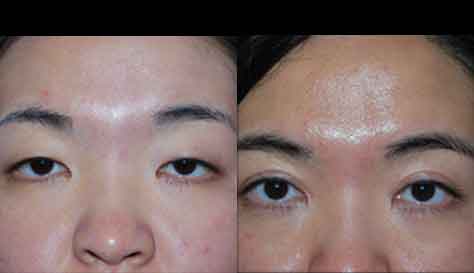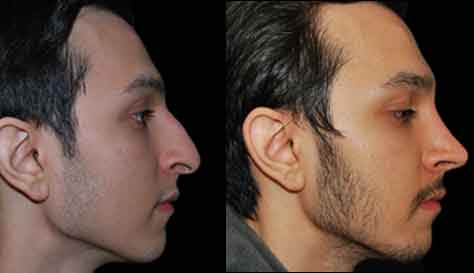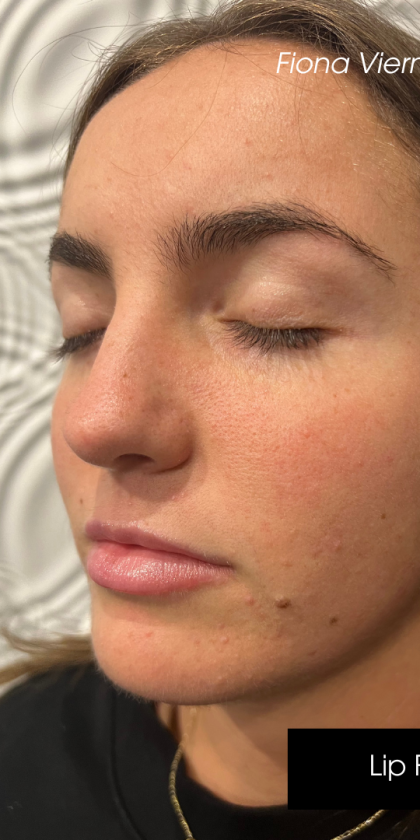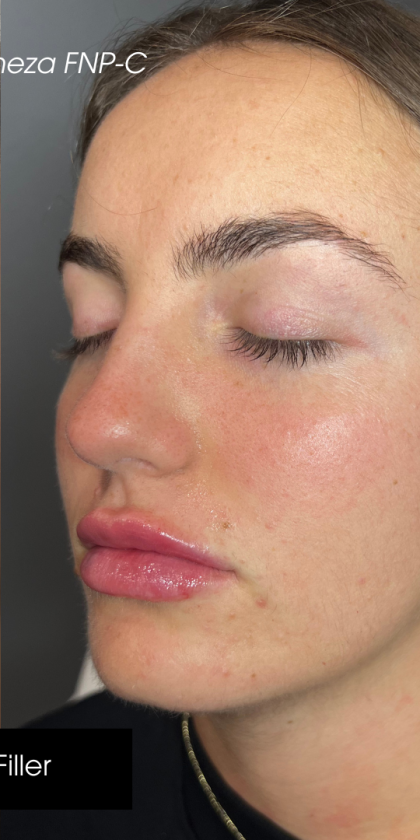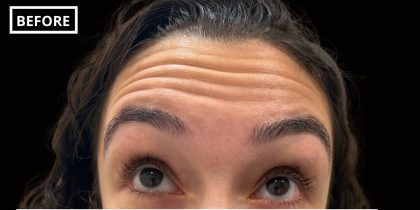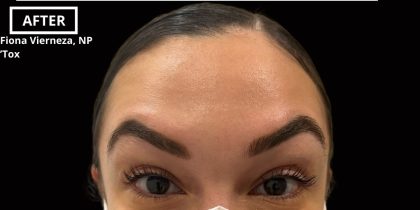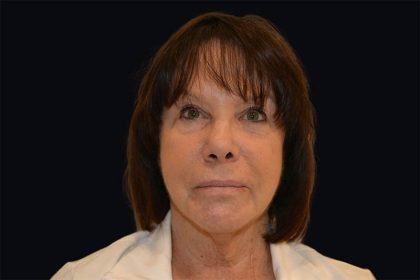Chemical And Enzyme Peels
Conveniently located to serve the areas of New Jersey and New York

A peel is a non-invasive cosmetic treatment that can help improve the appearance of the skin. These treatments use a combination of various acids and enzymes to exfoliate the skin, removing dead skin cells and promoting cell turnover. By doing so, they can help improve the appearance of skin that has been damaged by sun exposure, acne, the aging process, smoothing texture and balancing skin tone.
At Plastic Surgery of Short Hills, we believe that everyone deserves to feel confident and comfortable in their own skin. We offer a variety of chemical and enzyme peels, each designed to address specific concerns and tailored to meet individual needs. If you’re interested in learning more about chemical and enzyme peels or want to schedule a consultation with us at our Short Hills or Brooklyn locations, please give us a call at (973) 379-0101 or fill out a form on our website.
Contents
Before and After Photos
Chemical Peels
Chemical peeling, also known as chemexfoliation, is an effective skin rejuvenation technique. Superficial, medium, and deep peels are available for patients as a non-surgical way to refresh the skin of the face, neck, chest, hands, and body. The main goals of a chemical peel are to exfoliate the skin, promote cell turnover, and stimulate new cell growth. (1)
Patients can consider a chemical peel if they are experiencing any of the following:
- Fine lines
- Wrinkles
- Acne Scars
- Hyperpigmentation
- Melasma
- Enlarged Pores
- Age Spots
- Uneven Skin Tone
Benefits of a Chemical Peel
- Improves the clarity and texture of your skin
- Reduces the appearance of fine lines and wrinkles
- Helps even out skin tone
- Can reduce or eliminate acne scars, age spots, and other types of hyperpigmentation
- Stimulates collagen production
- Minimal downtime
- Safe for all skin types and colors
Peel Depth
Peels penetrate the skin at varying depths, depending on the conditions being treated.
Superficial Peel
Sometimes known as the “lunchtime peel”, a superficial peel penetrates only the epidermis, the outermost layer of the skin.
- Indications: dull skin, rough skin, uneven tone, blemishes
- Procedure Length: 10-15 minutes
- Recovery: 3-4 days
- Mild dryness, no downtime
Medium Peel
Medium peels penetrate the epidermis and papillary dermis, the secondary layer of the skin.
- Indications: acne scars, hyperpigmentation, wrinkles
- Procedure Length: 15-60 minutes
- Recovery: 4-6 days
- Red, sensitive skin for roughly one week
Deep Peel
Deep peels penetrate the deepest, to the mid-reticular dermis. In many cases IV sedation and local anesthesia are necessary.
- Indications: deep wrinkles, severe sun damage, deep acne scarring
- Procedure length: 60-90 minutes
- Recovery: up to 14 days
- Downtime required, significant peeling and sloughing of skin
What is an Enzyme Peel?
An enzyme peel is a gentler alternative to a chemical peel. Unlike a chemical peel, which uses acids to dissolve the outer layers of damaged skin, an enzyme peel uses natural ingredients found in fruits like papaya and pineapple. These enzymes target only the proteins in keratin, which is what the dead skin cells on the very outer surface of our skin are made of. The result is thoroughly exfoliated skin without the side-effects of more intensive acid-based peels. These naturally-derived enzymes are less harsh and are ideal for patients with sensitive skin. These peels also contain antioxidants and brightening vitamins to improve the health and appearance of skin. This process can help increase collagen synthesis and elastin production, which can lead to firmer, smoother-looking skin.
AHAs
AHA, or alpha hydroxy acids, are naturally occurring acids found in fruits and milk that exfoliate the skin by dissolving dead skin cells. (2) The most commonly used AHAs in peels are:
- Glycolic Acid
- Lactic Acid
- Citric Acid
- Malic Acid
- Tartaric Acid
AHA peels work by penetrating the skin’s surface and promoting collagen production and elastin synthesis, leading to skin rejuvenation.
BHAs
A BHA peel is a type of chemical peel that utilizes beta-hydroxy acid, specifically salicylic acid, to exfoliate the skin. This makes it an effective treatment for acne, as well as for improving skin texture and reducing the appearance of fine lines, wrinkles, scarring, and uneven skin tone. BHAs can penetrate deeper into the pores, allowing them to reduce the appearance of large pores, blackheads, whiteheads, and oily skin, making them an excellent solution for those suffering from acne.
Rejuvenate your skin and achieve a more youthful and radiant appearance. Contact us today at (973) 379-0101 to schedule a consultation at Plastic Surgery of Short Hills.
Cosmelan MD Peel
The Cosmelan MD Peel is a professional pigment control solution. Designed to deal with melanin overproduction, it’s a non-invasive, medical-grade treatment that reduces the appearance of the following:
- Melasma
- Solar Lentigo (Sun Spots)
- Post-Inflammatory Pigment Issues
- Freckles
- Age Spots
This treatment uses a blend of powerful ingredients to exfoliate, brighten and rejuvenate your skin, giving you a smoother, more even complexion. These include:
- Azelaic Acid
- Retinoic Acid
- Kojic Acid
- Phytic Acid
- Ascorbic Acid
- Arbutin
The Cosmelan MD Peel takes between 10-12 days to recover from, with up to 7-10 days of skin peeling and dryness. After this, patients can experience brighter, more even-toned skin.
VI Peel
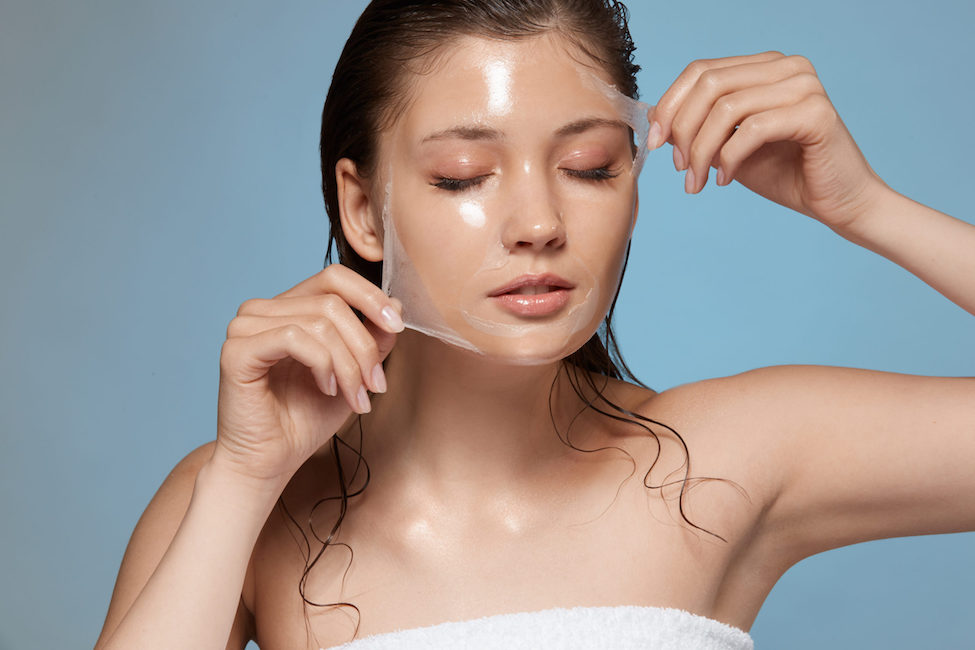
The VI Peel by Vitality Institute is a popular medium-depth peel that provides comprehensive skin rejuvenation. It is available in six unique formulations, each of which addresses specific skin concerns. It involves the application of a unique formula that contains a blend of powerful AHAs, BHAs, and other ingredients, which may include:
- Glycolic Acid
- Salicylic Acid
- Trichloroacetic Acid
- Retinoic Acid
- Kojic Acid
- Hydroquinone
- Vitamin C
- Antioxidants
- Resorcinol
- Phenol
These ingredients work together to gently exfoliate the skin, stimulate collagen production, and improve elastin production. It is also useful for people who wish to reduce the appearance of large pores and balance surface oils.
Patients can see results in as little as 7 days, and best of all, the VI Peel is suitable for all skin types and tones.
Other Popular Peels
Glycolic Acid Peel
Also known as the “fruit peel”, the glycolic acid peel is the most common AHA peel. Glycolic acid works by breaking down the bonds between dead skin cells, allowing them to be sloughed away easily. This chemical peel is used for skin resurfacing and is known for its effectiveness in treating acne, fine lines, wrinkles, hyperpigmentation, sun damage, blackheads, whiteheads, and clogged pores. It’s an attractive choice for patients because it’s cost-effective, simple, and requires no downtime. (3)
Jessner’s Peel
A Jessner’s peel is a popular chemical peel treatment that has been used for decades to address a wide range of skin concerns. This treatment involves the use of a chemical solution made up of AHAs and BHAs salicylic acid, lactic acid, and the organic compound resorcinol. When applied to the skin, the solution works to exfoliate the top layers of dead skin cells, revealing smoother, brighter, and more even-toned skin.
Malic Acid Peel
The malic acid peel can help improve numerous skin concerns, including fine lines and wrinkles, hyperpigmentation, acne scars, and uneven skin texture. Unlike other chemical peels that require extensive downtime, the malic acid peel is gentle enough for all skin types and does not require any recovery time.
TCA Peel
The TCA peel, also known as trichloroacetic acid peel, works by exfoliating the top layers of skin and promoting collagen production, resulting in smoother, brighter, and more youthful-looking skin. TCA peels are highly effective in treating a wide range of skin concerns, including acne scars, hyperpigmentation, fine lines, wrinkles, blemishes, sun damage, age spots, and melasma.
Personal Consultation
Your personal consultation at Plastic Surgery of Short Hills will be an opportunity for you to tell us the reason why you want a chemical peel. You will have the opportunity to discuss your needs with a skin specialist and formulate a strategy to achieve the most effective results. At this time, we will take some information about your medical history and we’ll conduct a physical examination to determine the best peel for your unique skin concerns.
Cost of a Chemical Peel in Short Hills, NJ
Chemical and enzyme peels are a safe, effective and painless treatment that can improve the appearance of your skin. The cost of this procedure will depend on various factors such as the type of peel, the number of sessions required, and the patient’s individual needs. Don’t let a dull complexion or uneven skin tone hold you back any longer. Get in touch with us at (973) 379-0101 or complete an online form to schedule your appointment with us.
For more information about our other medspa services, and our surgical services, please visit our blog.
FAQ
Is a chemical peel procedure uncomfortable?
Most patients experience a slight stinging or burning sensation during a chemical peel, but this discomfort is typically short-lived. Enzyme peels are a gentler way to achieve comparable results.
How long does a chemical peel take?
The length of the procedure depends on the type of chemical peel being performed. A superficial peel may only take 15-20 minutes, while a deeper peel can take up to an hour.
How long is chemical peel recovery?
Recovery time varies depending on the depth of the peel. Superficial peels typically have little to no downtime, while deeper peels can require up to two weeks of recovery time. During the recovery period, it is important to avoid direct sunlight, wear sunscreen, and avoid picking at any areas of peeling skin.
Can I do a chemical peel at home?
Chemical peeling at home without supervision from a medical professional can be risky, particularly without monitoring of the specific makeup of the formula, the duration of time it is left on the skin, and the absence of aftercare directions. However, when performed by a qualified and experienced professional, chemical peels can be a hugely beneficial way to brighten and rejuvenate skin.
References
- Rendon MI, Berson DS, Cohen JL, Roberts WE, Starker I, Wang B. Evidence and considerations in the application of chemical peels in skin disorders and aesthetic resurfacing. The Journal of clinical and aesthetic dermatology. 2010;3(7):32-43. https://www.ncbi.nlm.nih.gov/pmc/articles/PMC2921757/
- Tang SC, Yang JH. Dual Effects of Alpha-Hydroxy Acids on the Skin. Molecules : A Journal of Synthetic Chemistry and Natural Product Chemistry. 2018;23(4). doi:https://doi.org/10.3390/molecules23040863
- Sharad J. Glycolic acid peel therapy – a current review. Clinical, Cosmetic and Investigational Dermatology. Published online November 2013:281. doi:https://doi.org/10.2147/ccid.s34029




